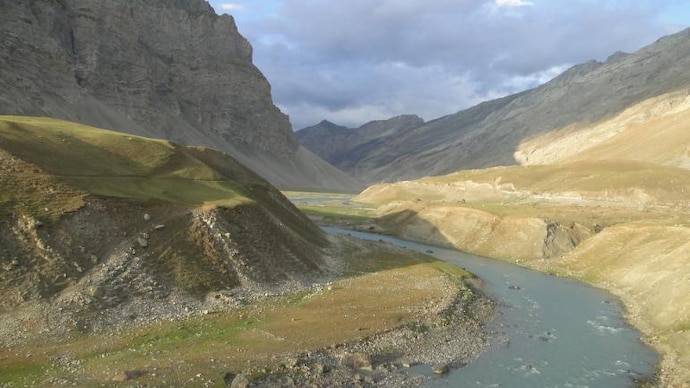Indus Waters Treaty: All about the water distribution pact between India and Pakistan
Union minister Nitin Gadkari on Thursday said the government, under the Indus Waters Treaty, has decided to stop its share of water which was used to flow to Pakistan.

The water distribution treaty between India and Pakistan that was brokered by the World Bank in 1960 to use the water available in the Indus system of rivers originating in India, has come in the limelight once again as New Delhi has decided to stop the flow of its share of water from the three eastern rivers - Beas, Ravi, and Sutlej - to Islamabad.
The decision, announced on Thursday by Union Minister Nitin Gadkari, came in the wake of the Pulwama suicide bombing attack.
The Indus Waters Treaty is one of the most liberal water distribution agreements between the two countries. The pact was signed between India and Pakistan in September 1960 in Karachi by the then Indian Prime Minister Jawaharlal Nehru and Pakistan President Ayub Khan.
Under the leadership of Hon'ble PM Sri @narendramodi ji, Our Govt. has decided to stop our share of water which used to flow to Pakistan. We will divert water from Eastern rivers and supply it to our people in Jammu and Kashmir and Punjab. Nitin Gadkari (@nitin_gadkari) February 21, 2019
What is the Indus Waters Treaty?
In the year 1960, India and Pakistan signed a water distribution agreement -- came to be known as Indus Waters Treaty -- which was orchestrated by the World Bank.
This agreement took nine years of negotiations and divides the control of six rivers between the two nations once signed.
Under this treaty, India got control over:
- Beas
- Ravi
- Sutlej
While Pakistan got control over:
- Indus
- Chenab
- Jhelum
pic.twitter.com/RZvAlMKXN1 Office Of Nitin Gadkari (@OfficeOfNG) February 22, 2019
You can spot the rivers on the map:

Under the treaty signed between India and Pakistan in 1960, all the waters of the three eastern rivers, averaging around 33 million acre-feet (MAF), were allocated to India for exclusive use.
The waters of the western rivers - Indus, Jhelum, and Chenab - averaging to around 135 MAF, were allocated to Pakistan except for 'specified domestic, non-consumptive and agricultural use permitted to India,' according to the treaty.
India has also been given the right to generate hydroelectricity through the run of the river (RoR) projects on the western rivers which, subject to specific criteria for design and operation, is unrestricted.
Why is the Indus Waters treaty important for Pakistan?
Indus, Chenab and Jhelum are the lifelines of Pakistan as the country is highly dependent on these rivers for its water supply. Since these rivers do not originate from Pakistan but flow to the country through India, Pakistan fears the threat of drought and famine.
While Chenab and Jhelum originate from India, Indus originates from China, making its way to Pakistan via India.
How is India utilising the waters of Eastern rivers?
1. The treaty clearly spells the do's and don'ts for both countries; as it allows India to use only 20 per cent of the total water carried by the Indus river.
2. To utilise the waters of the Eastern rivers which have been allocated to India for exclusive use, India has constructed the Bhakra Dam on Satluj, Pong and Pandoh Dam on Beas and Thein (Ranjitsagar) on Ravi.
3. These storage works, together with other works like Beas-Sutlej Link, Madhopur-Beas Link, and Indira Gandhi Nahar Project have helped India utilise nearly the entire share (95 per cent) of the eastern river waters.
4. However, about two MAF of water annually from Ravi is reported to be still flowing unutilised to Pakistan.
5. To stop the flow of these waters, the Centre is currently taking three steps - resumption of construction of Shahpurkandi project; construction of Ujh multipurpose project; and a second Ravi-Beas link below Ujh.
Read | What is the 'Most Favoured Nation' status that India just revoked from Pakistan?
